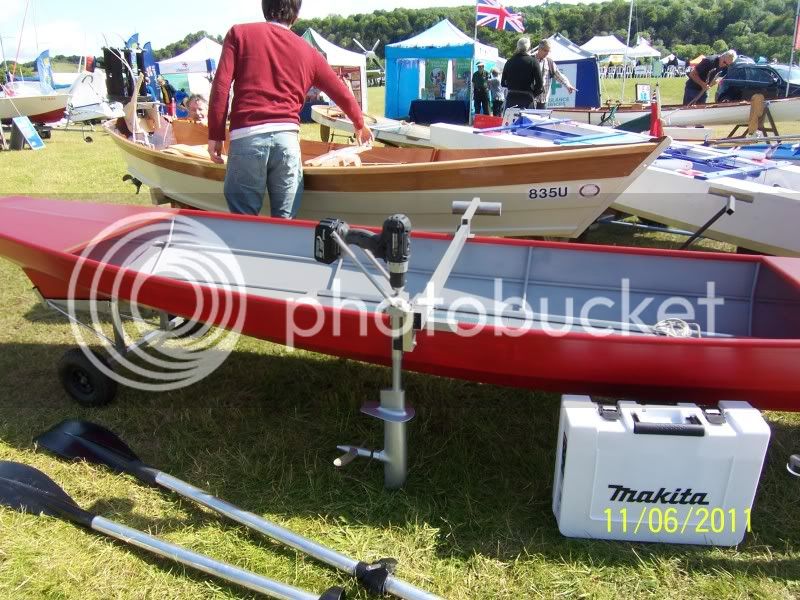The basic idea of this trolling motor is the multi functionality of the cordless drill.
Is the power of a battery drill enough to drive a trolling boat on still waters?
The answer is yes. I made the trolling motor from wood and some other parts in a
Clear design with Clean materials and Cheap. So, the 3 C's.
The outboard is partly inflatable for easy transport. Two nails are locking the hinge
and the steering handle. All the functional parts are there, motor, propellor,
hinge with lift, steering handle with trottle and the square drillhead.
A test with a canoe was convincing although a drill with a low/high switch for getting
the best thrust on the prop is better. Also li-ion battery's give a longer range.
It is all by all a fun project between all the high tech. Ready for some enhancements.
I also used a battery adaptor for connecting an external 12V gel battery of 12AH.
Enough to navigate for a while. Enjoy!!!
Video: http://www.youtube.com/watch?v=rZJTGqmtzBs
Is the power of a battery drill enough to drive a trolling boat on still waters?
The answer is yes. I made the trolling motor from wood and some other parts in a
Clear design with Clean materials and Cheap. So, the 3 C's.
The outboard is partly inflatable for easy transport. Two nails are locking the hinge
and the steering handle. All the functional parts are there, motor, propellor,
hinge with lift, steering handle with trottle and the square drillhead.
A test with a canoe was convincing although a drill with a low/high switch for getting
the best thrust on the prop is better. Also li-ion battery's give a longer range.
It is all by all a fun project between all the high tech. Ready for some enhancements.
I also used a battery adaptor for connecting an external 12V gel battery of 12AH.
Enough to navigate for a while. Enjoy!!!
Video: http://www.youtube.com/watch?v=rZJTGqmtzBs


